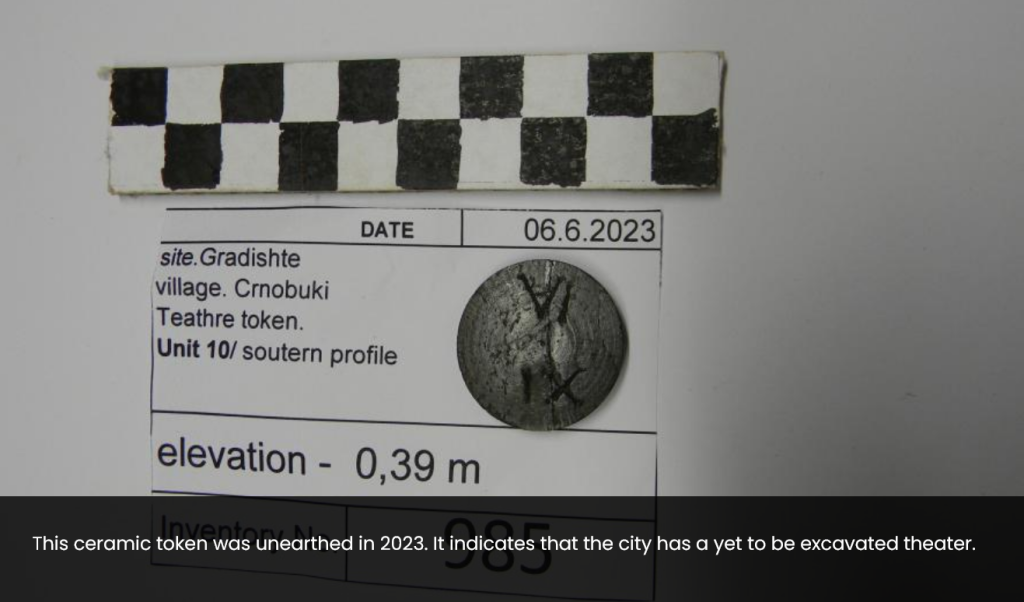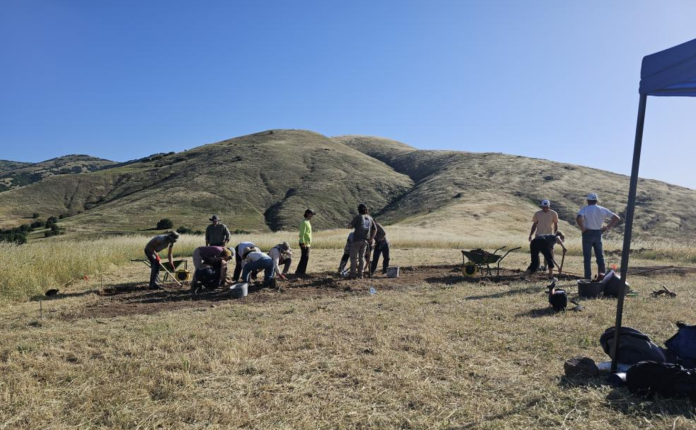An archaeological breakthrough near the village of Crnobuki (Bitola region), Macedonia, is rewriting what we know about the ancient Macedonian world. What was once believed to be a minor military outpost guarding against Roman incursions is now emerging as one of the most significant ancient urban centres in the region. Archaeologists now believe it may be Lyncus, the long-lost capital of the Kingdom of Lyncestis, an autonomous kingdom within Upper Macedonia that existed well before it was unified under the Argead dynasty and the birthplace of Queen Eurydice of Macedon, grandmother of Alexander the Great.
The site, known as Gradishte, is being excavated by teams from Macedonia’s Institute and Museum–Bitola and Cal Poly Humboldt. Their findings are transforming the historical understanding of this region’s role in shaping ancient Macedonian and European civilisation.
“We’re only beginning to scratch the surface of what we can learn about this period,” says Engin Nasuh, curator-advisor archaeologist at the National Institute and Museum–Bitola.
Gradishte was first mentioned in literature in 1966, but its significance remained unclear for decades. Over the past few years, excavations have begun to reveal a far more expansive and influential site than previously imagined.

In 2023, using cutting-edge tools, including ground-penetrating radar and drone-deployed LIDAR, researchers mapped what appears to be a thriving city spanning at least seven acres. The site includes notable features such as a possible Macedonian-style theatre and a textile workshop.
Previously believed to have been built during the reign of King Philip V (221–179 BCE), the city’s origin has been pushed back thanks to the discovery of a coin minted between 325–323 BCE, during Alexander the Great’s lifetime. Even earlier human activity is now being considered based on artifacts such as axes and ceramic vessel fragments, pointing to inhabitation during the Bronze Age (3,300–1,200 BCE).
“The ancient Macedonian state, one of the first modern states in Europe, had an enormous impact on the world,” Nasuh explains. “It is a civilization that played a major role in today’s understanding of the world and the desire to connect different civilizations and cultures.”
“This discovery is significant,” says Nick Angeloff, Cal Poly Humboldt Anthropology professor and archaeologist. “It highlights the complex networks and power structures of ancient Macedonia, especially given the city’s location along trade routes to Constantinople. It’s even possible that historical figures like Octavian and Agrippa passed through the area on their way to confront Cleopatra and Mark Antony at the Battle of Actium.”
Students, faculty, and researchers from both institutions are continuing to explore the site, piecing together a more complete image of life in early Macedonia.
“All these studies are just a small part of the research of early European civilizations,” Nasuh says. “I see it as a large mosaic, and our studies are just a few pebbles in that mosaic. With each subsequent study, a new pebble is placed, until one day we get the entire picture.”
This discovery comes after the famous Macedonian sun was discovered again just outside of Ohrid several months ago and affirms Macedonia’s place not only as a regional power before Alexander but as a foundational player in the development of Western civilisation.



